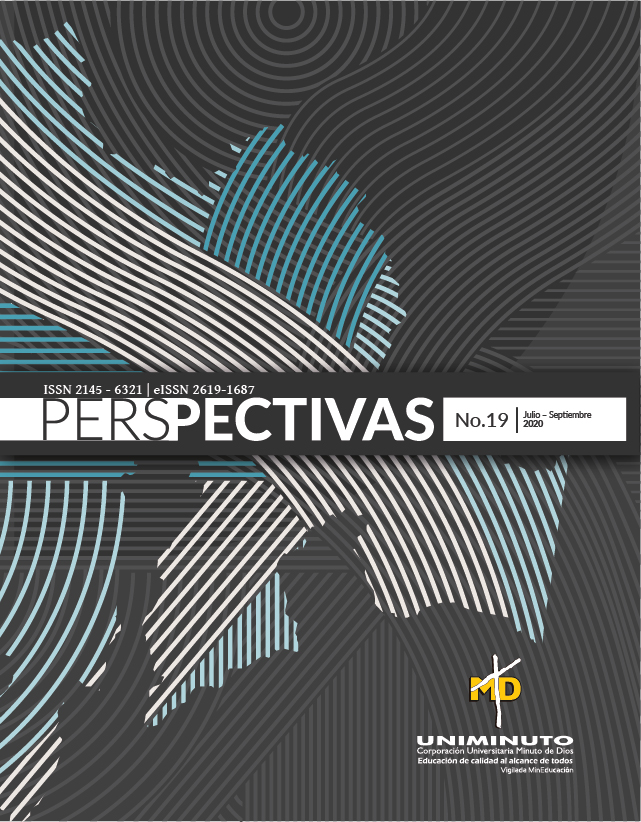Lideres y organizaciones culturalmente diversas, un desafio para el presente siglo
Barra lateral del artículo
Cómo citar
Altmetrics
Detalles del artículo

Esta obra está bajo una licencia internacional Creative Commons Atribución 4.0.
Contenido principal del artículo
Resumen
Las organizaciones del siglo XXI operan en un entorno dinámico e inestable, caracterizadas por la improvisación y poca rutina, esto implica agilidad y versatilidad en sus formas de trabajo, fomentando la innovación, privilegiando la contratación de expertos y equipos de trabajo diversos. Su éxito depende de líderes competentes para relacionarse y coordinar equipos eficazmente (Weick, 2000). El presente artículo propone una reflexión y análisis crítico usando la consulta en fuentes primarias, para identificar las habilidades de los líderes que laboran en organizaciones culturalmente diversas. Los comportamientos de los líderes influyen en la gestión del cambio mediante conjuntos de habilidades permitiéndoles funcionar eficazmente en un escenario laboral diverso, conducir equipos de personas y promover capacidades distintivas con ventajas competitivas comprobadas (Ramall, 2004). Finalmente, las organizaciones culturalmente diversas representan una oportunidad y a la vez una limitante, al no contar con líderes competentes para gestionar sus equipos (Heames & Harvey, 2006).
Referencias
Bennett, M. J. (2007). Intercultural competence for global leadership. Manuskript, das auf Bennett 2001a und 2001b beruht.
Blank, B.L. (2002). La Administración de Organizaciones: Un Enfoque Estratégico (3ª ed.). Cali: Artes Gráficas del Valle.
Buciuniene, I. & Kazlauskaite, R. (2012). The linkage between HRM, CSR and performance outcomes. Baltic Journal of Management, 7(1), 5 – 24.
Bustamante, M. A. & Opazo, P. A. (2004). Hacia un concepto de Complejidad: Sistema, Organización y Empresa. Serie Documentos Docentes. FACE SDD, 2(3), 1–21.
Cox, T. H. (1991). The multicultural organization. Academy of Management Executive, 5, 34-47.
Daft, R.L. (2000). Teoría y diseño organizacional (6ª ed., pp. 147-148). México: International Thomson.
Ely, R.J. & Thomas, D.A. (2001). Cultural diversity at work: The effects of diversity perspectives on work group processes and outcomes. Administrative Science Quarterly, 46(2), 229-273.
Heames, J.T. & Harvey, M. (2006). The evolution of the concept of the “executive” from the 20th century manager to the 21st century global leader. Journal of Leadership and Organizational Studies, 13(2), 29-42.
Hernández Sampieri, R., Fernández Collado, C., & Baptista Lucio, P. (2014). Metodología de la investigación. Sexta Edición. Editorial Mc Graw Hill. México. 2014•
Hernández, R. Metodología de la Investigación. 6a Edición, Mc Graw Hill, México.
House, R., Javidan, M., Hanges, P., & Dorfman, P. (2002). Understanding cultures and implicit leadership theories across the globe: an introduction to project GLOBE. Journal of world business, 37(1), 3- 10.
Kotter, J. P. (2008). Force for change: How leadership differs from management. Simon and Schuster.
Levy-Leboyer, C. (2001). Gestión de competencias. Buenos Aires: Ediciones Gestión, 2000.
Leung, K., Ang, S. y Tan, M. (2014). Intercultural competence. Annual Review of Organizational Psychology & Organizational Behavior, 1, 489-519.
Lockwood, N. R., SPHR, G., & Expert, H. C. (2005). Workplace diversity. Society of Human Resource Management. Recuperado el 03 de Julio de 2017, de: http://www. shrm. org/research/quarterly
Lustig, M. W., & Koester, J. (2013). Intercultural competence. (7ª ed.). Boston: Pearson.
Medina, A. F., & Castañeda, D. I. (2010). Competencias requeridas en los encargados de recursos humanos para el desempeño eficaz en empresas industriales de Cali, Colombia. Estudios Gerenciales, 26(115), 117-140.
Organización Internacional para las Migraciones. (2015). Informe sobre las migraciones en el mundo. Los migrantes y las ciudades nuevas colaboraciones para gestionar la movilidad. Suiza: OIM. Recuperado de https://publications.iom.int/books/informe-sobre-las-migraciones- en-el-mundo-2015-los-migrantes-y-las-ciudades-nuevas.
Peláez, l. & García, M. (2011). Gestión humana y responsabilidad social empresarial: una relación aproximada al contexto del valle del Cauca – Colombia. En: Encuentro internacional e investigadores en Administración 2011. (1504-1529) .Universidad externado – Universidad del Valle. Bogotá
Ramlall, S. (2004). A review of employee motivation theories and their implications for employee retention within organizations. Journal of American Academy of Business, 5(2), 52-63
Revista Gestión (2018). Recuperado el 04 de Febrero de 2018 de https://gestion.pe/economia/management-empleo/encuentra-mundo- diversidad-talento-mercado-laboral-226073
Subeliani, D., & Tsogas, G. (2005). Managing diversity in the Netherlands: a case study of Rabobank. The international journal of human resource management, 16(5), 831-851.Subeliani, D. & Tsogas, G. (2005). "Managing diversity in the Netherlands: a case study of Rabobank”. International Journal of Human Resource Management, 16 (5), 831.
Sue, D. W. (2001). Multidimensional facets of cultural competence. The counseling psychologist, 29(6), 790-821.
Stahl, G. K. & Voigt, A. (2008). Do cultural differences matter in mergers and acquisitions? A tentative model and meta-analytic examination. Organization Science, 19, 160-176.
UNESCO (2013). Intercultural competences. Paris, France: Editor: Intersectoral Platform for a Culture of Peace and Non-Violence, Bureau for Strategic Planning.
Ulrich, D., & Brockbank, W. (2005). The HR value proposition. Boston: Harvard Business School Press.
Ulrich, D., Younger, J., Brockbank, W., & Ulrich, M. (2012). HR talent and the new HR competencies. Strategic HR Review, 11(4), 217-222.
Weick, K. E. (2000). El liderazgo como legitimación dela duda. En W. Bennis, G. M. Spreitzer y T. G. Cummimgs (Eds.), El futuro del liderazgo (pp. 104-115). Bilbao: Deusto
Wihtol de Wenden, C. (2016). Las nuevas migraciones. Sur 23, 13(23), 17- 28.

